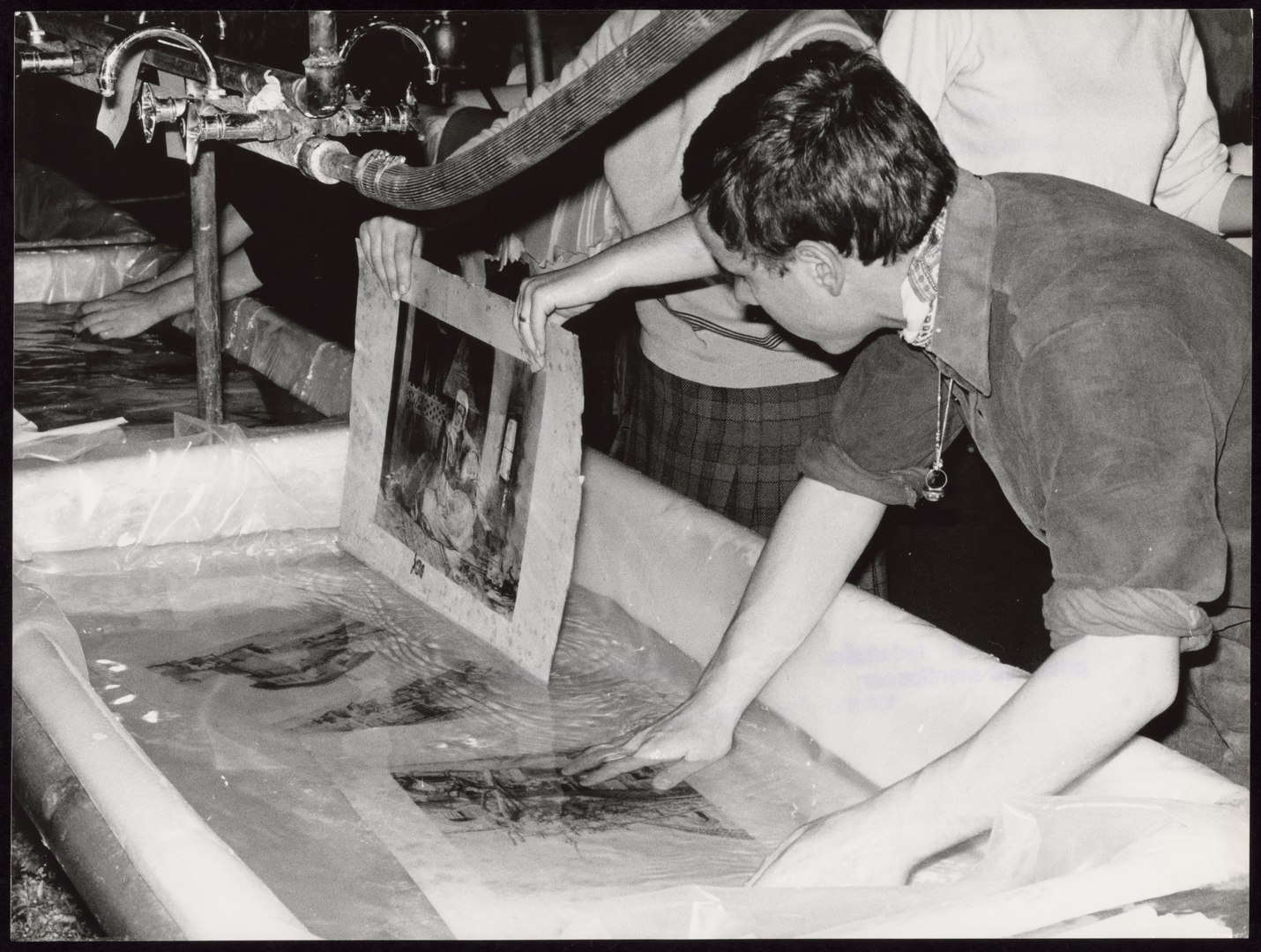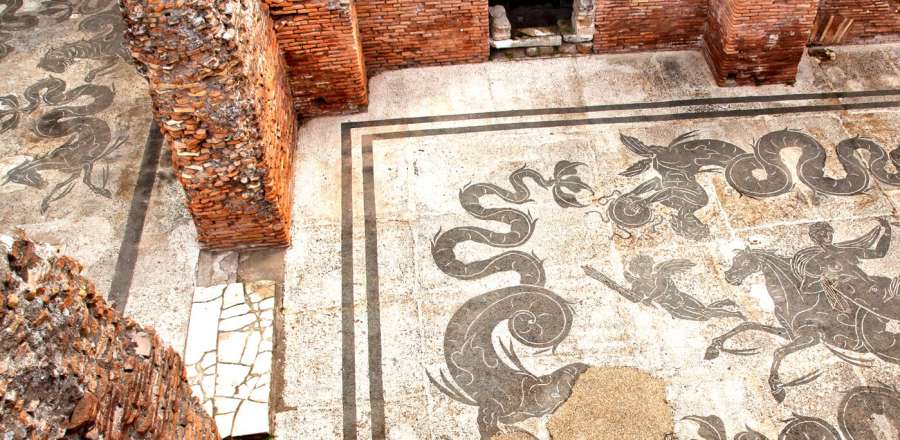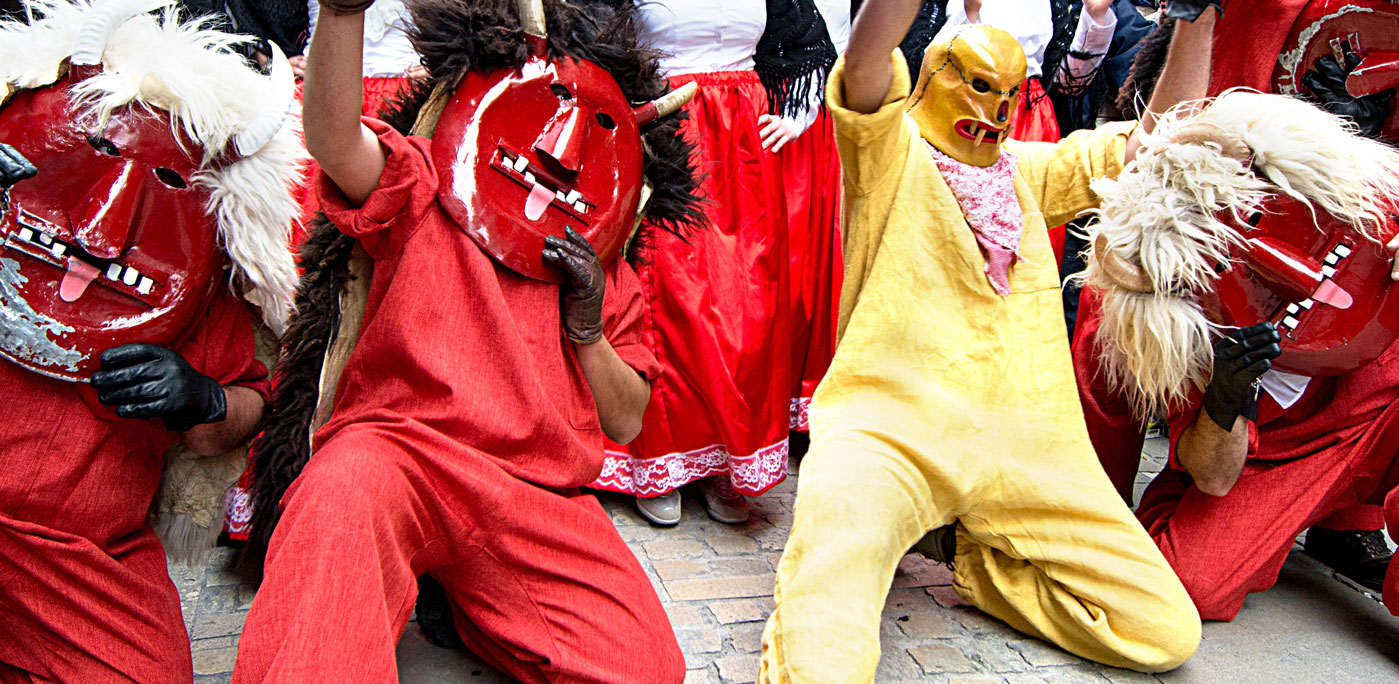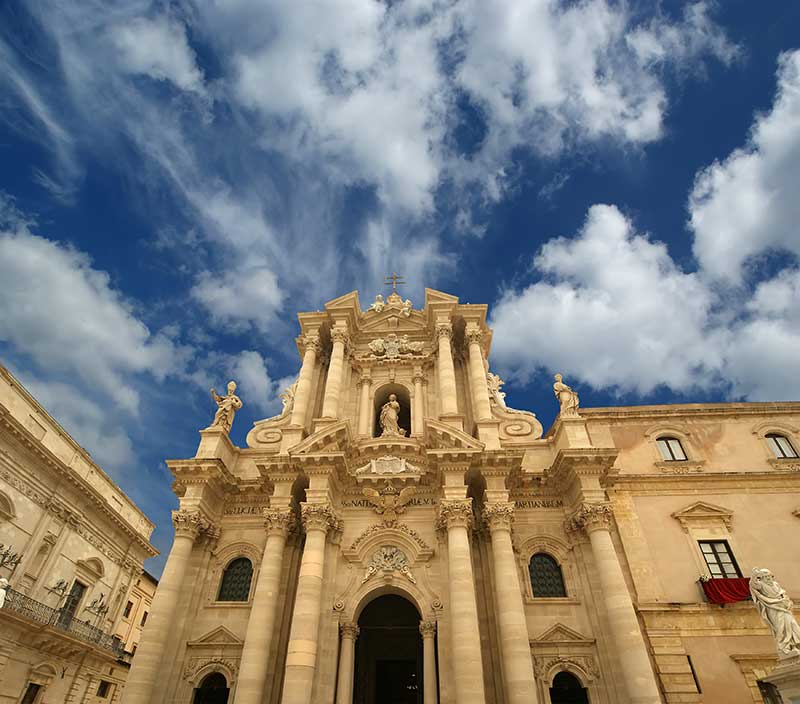Fifty years ago rain, mud and sorrow descended on two of Italy’s most loved historic cities, Florence and Venice. At the height of the floods waters rose to 6.7m in parts of Florence and inundated over 75% of Venice, leaving it completely cut off for over 24 hours. Dozens died, celebrated artworks were lost and businesses closed forever across the two ancient cities. Buildings would be repaired but the worst damage occurred because thousands of Venetians were made homeless overnight. Forced to move out of the historic lagoon city whilst it recovered they would never return, changing the heart of Venice forever. Let’s take a look back at how the events of November 1966 unfolded.
Florence and her mud angels
During the first few days of November Tuscany was experiencing intense rainfall. And early snow was falling on the mountains although no-one was worried; it was normal seasonal weather. But the rain kept coming.
On November 2nd seventeen inches of rain fell in just 24 hours around Arezzo, 50 miles upstream of Florence where the River Arno begins. And the snow began to melt.
The next day, excessive volumes of water were coming off the mountains. Drains in the city were struggling to cope. And the River Arno was a terrifying twenty feet above normal levels. Florentines prayed that high riverbanks would contain the torrent overnight. The city held its breath.
But the deluge was too much. The overloaded Arno began flooding villages around Arezzo shortly after midnight and water backed up to the west too, overwhelming roads to Empoli. And around 4am engineers at the Valdarno dam made the devastating decision to open the gates to stop it bursting, sending water crashing downriver at 37 miles per hour. It didn’t take long to reach the city.
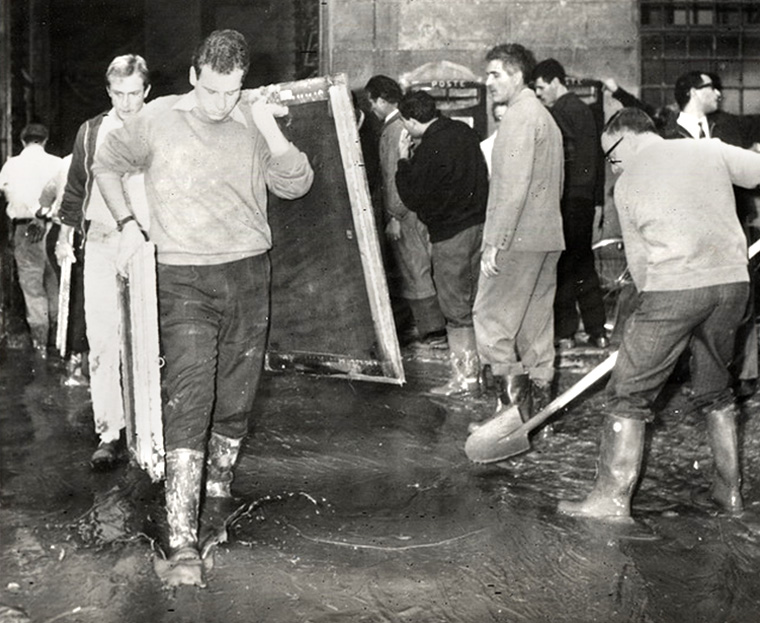
The memory of what greeted people as the sun rose over Florence on Friday 4th November 1966 is still vivid in the minds of many Florentines today. The disaster peaked around lunchtime, ripping out the river’s stone banks, battering bridges and sending huge, heaving rollers carrying mud and debris into the city.
Floodwater inundated the streets, rushing past the Uffizzi Gallery, through Piazza della Signoria and around the feet of Michelangelo’s Davide. It poured into cellars and shops, trapping people in their apartments. And gushed on through to the Duomo where the filthy, 20-foot deep oily vortex swirled around the Baptistery, tearing panels off the spectacular bronze Gate of Paradise. At its highest, the water was 22 feet deep and didn’t start to recede until 8pm. But the problems were still not over.
A layer of thick, gooey mud remained, coating cars, buildings and streets with a stinking sludge. Florentines faced a race to clean up, without water, food or electricity, before the mud – a mix of sewage, heating oil, mud and debris – set like concrete. It was an uphill battle but a flock of “angels of the mud” came to their rescue, as hundreds of volunteers arrived to shovel tons of muck and salvage thousands of works of art.
They were undoubtedly the salvation of the city, although it would take much more to restore it to its former glory. More than 30 people lost their lives, 6000 businesses failed and over 50,000 families were made homeless. 15,000 cars lay strewn and 14,000 works of art were damaged but the greatest harm was done to around four million books and manuscripts, many of which are still undergoing restoration 50 years on. Meanwhile, a few miles to the north another city was deep underwater struggling to cope with a tidal wave of similar proportions.
Venice under water and under siege
While Florence fought a river of mud, Venice, the city of canals, was facing assault too. A perfect storm of three days of persistent rain, an abnormally high seasonal tide and fierce Scirocco winds pushing the sea inland engulfed coastal defenses sending saltwater and sewage gushing up through the drains into the streets, courtyards and houses of the city.
You might think that Venice would be used to flooding, having experienced acqua alta every winter for centuries, but November 4th 1966 was different. Instead of maybe a foot of water, the canals rose well over 6 feet inundating palaces, shops, restaurants and the ground floors of nearly 90% of the city. To make matters worse, there was scant warning of the severity of the storm either, so residents had little or no time to prepare.
Thousands of Venetians woke to find themselves pinned in their buildings. Over 5,000 were rendered homeless overnight losing their flats entirely and thousands of artworks, valued at $6 billion in today’s money, stored at ground level, were irretrievably damaged. It was unquestionably the worst flood to ever hit Venice before or since, exceeding all records by more than a foot and was an enormous body blow for a city already woefully in need of investment.
But although Venice, like Florence, would be repaired and restored over time, the worst damage done wasn’t due to the watery inundation, it was done by a retreat of an altogether different kind.
After the floods, thousands of Venetians were forced to decamp to Mestre, on the mainland, whilst their homes, shops and businesses were dried out and repaired. Much of the work took months or years and as the days ticked by the urge to return to the historic centre seems to have waned. Life in Mestre was clearly easier with modern flats and houses, lower living costs and job opportunities in the shipyards, chemical plants and factories of neighboring Marghera. And unsurprisingly many evacuees chose to remain, even after the historic centre had recovered, initiating a gradual but persistent emptying of the city that continues today.
Clearly the loss of lives, artwork, homes and businesses suffered across Florence and Venice on 4th November 1966 damaged the cities deeply and extensively. And as they prepare to mark the 50th anniversary, some wounds have still not healed. But the floods did one positive thing in bringing the cities’ plights to the world. And we answered with physical and monetary support proving the love we have for their historic and artistic heritage. Long may they continue to rise above the floods of 1966.
